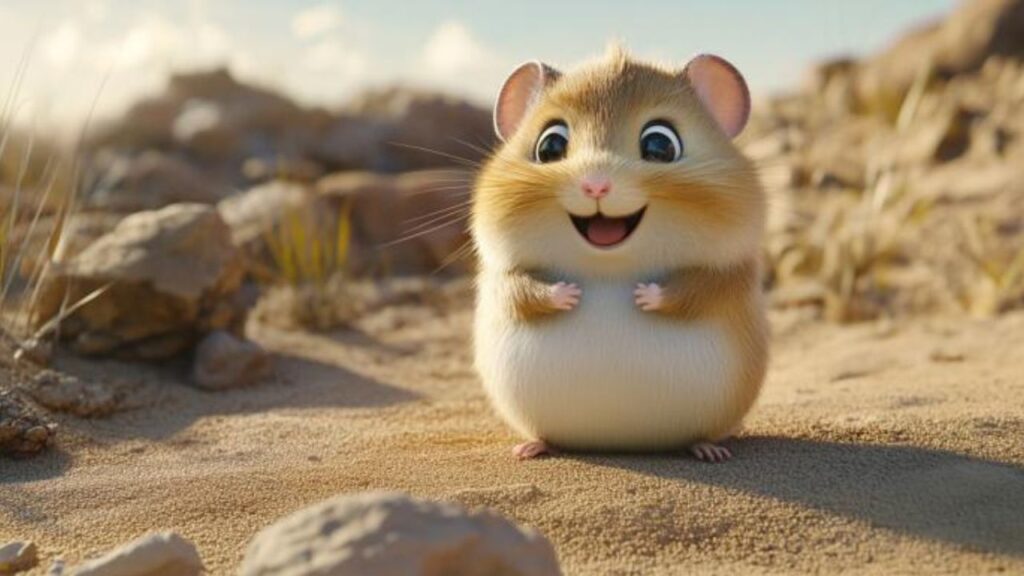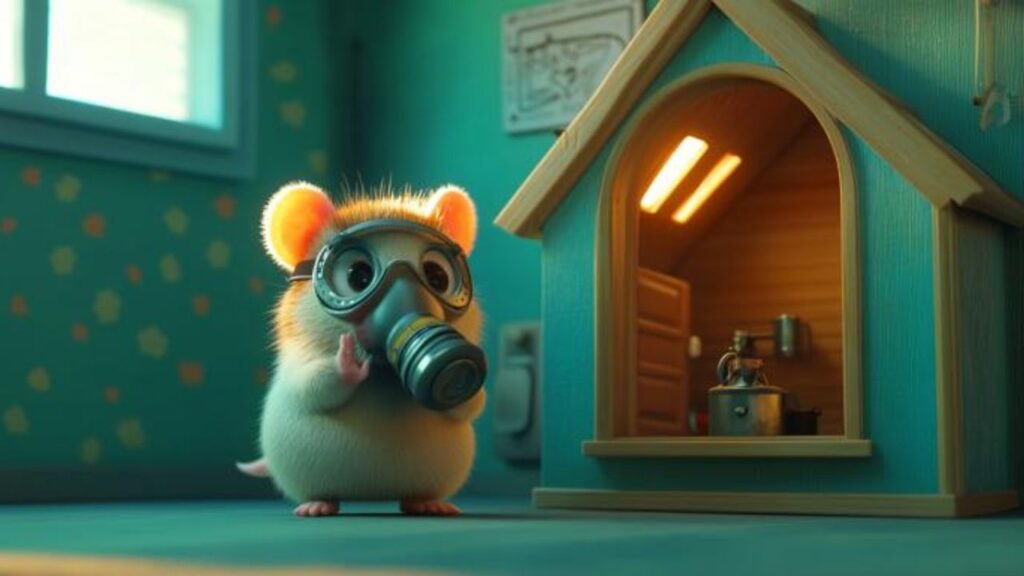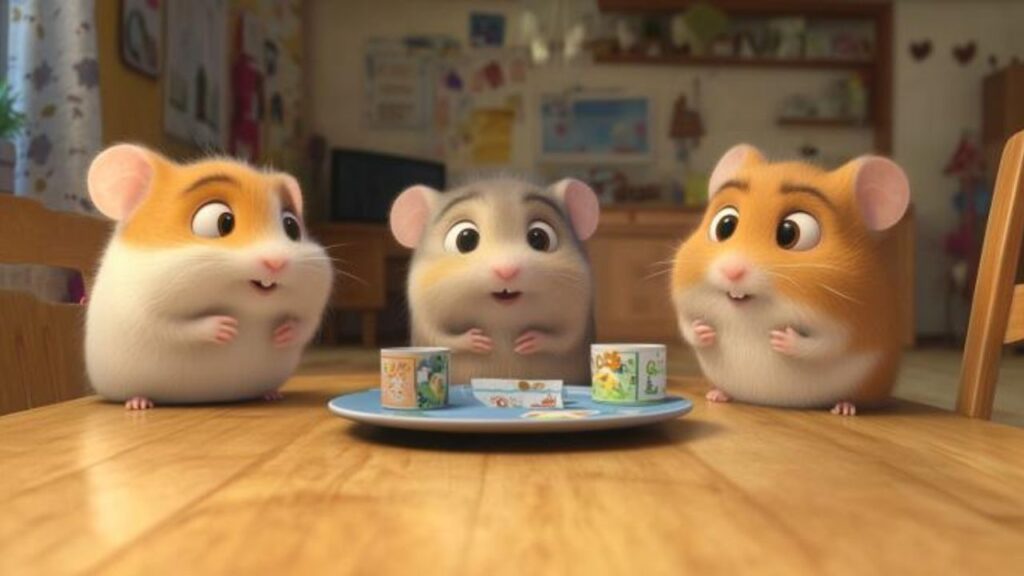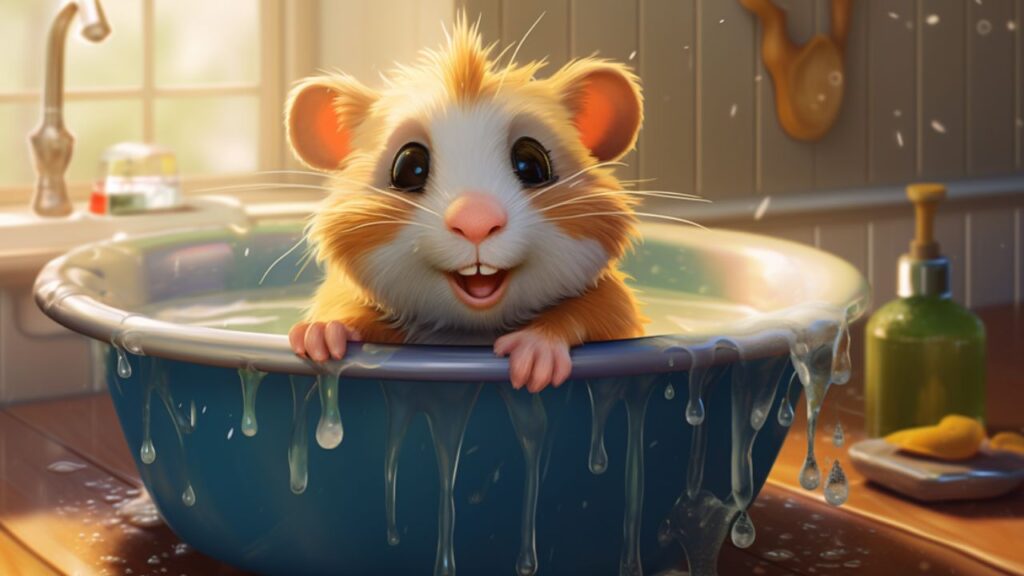Welcome, fellow hamster enthusiasts! Today, I’m excited to delve into a topic that’s crucial for both our furry friends and the planet: the environmental impact of hamster care. While our tiny companions bring immense joy and enrichment to our lives, it’s important to recognize that the way we care for them can have significant ecological consequences. From the supplies we choose to the waste we generate, every aspect of hamster care can leave an environmental footprint.
Understanding and mitigating this impact is essential for promoting a sustainable and eco-friendly lifestyle. By making informed choices and adopting greener practices, we can ensure that our love for hamsters goes hand-in-hand with our commitment to protecting the environment. In this article, we will explore various aspects of hamster care that affect the environment and provide practical tips for reducing your ecological footprint. Let’s embark on this journey to create a healthier planet, one hamster at a time!
Understanding the Environmental Footprint of Hamster Care

Caring for a hamster involves various aspects that contribute to your household’s overall environmental impact. From the products we buy to the resources we use daily, every element of hamster care can leave an ecological footprint. By examining these areas, we can identify opportunities to make more sustainable choices and minimize our environmental impact. In this section, we will explore the environmental implications of hamster supplies, water and energy usage, and waste management, along with practical tips to adopt greener practices.
Hamster Supplies and Sustainability
- Hamster care requires various supplies, including cages, bedding, food, water bottles, toys, and cleaning products. These items are essential for providing a safe and comfortable environment for your hamster, but they can also have significant environmental impacts due to their production, use, and disposal.
- The manufacturing of hamster supplies often involves the use of non-renewable resources, chemicals, and energy, which contribute to pollution and greenhouse gas emissions. Additionally, many hamster products are made from plastic, which is not biodegradable and can persist in the environment for centuries. The disposal of these products, particularly single-use items, adds to the growing problem of landfill waste.
- To reduce the environmental impact of hamster care, consider opting for sustainable alternatives. For example, choose cages made from recycled or eco-friendly materials, such as glass or metal, instead of plastic. Look for bedding made from natural, biodegradable materials like paper or hemp, and opt for food and treats that are organic or locally sourced. Additionally, you can make your own hamster toys from recyclable materials, reducing waste and promoting sustainability.
Water and Energy Usage
- Hamsters require a constant supply of fresh water, typically provided through water bottles or bowls. While individual hamsters don’t consume large quantities of water, the cumulative usage in a household with multiple pets can add up. It’s important to consider how water is used in other aspects of hamster care, such as cleaning their habitats.
- Hamster habitats often require energy for heating, lighting, and sometimes running exercise equipment like wheels. Continuous use of these energy sources can contribute to higher electricity consumption and, consequently, a larger carbon footprint.
- To minimize water usage, ensure that water bottles are leak-proof and avoid overfilling them. For cleaning, use water-efficient methods and non-toxic cleaning products. To reduce energy consumption, consider using energy-efficient bulbs for lighting and maintaining the habitat at a moderate temperature to avoid excessive heating. Utilizing natural light during the day and providing ventilation can also help reduce energy needs.
Waste Management
- Hamster care generates various types of waste, including used bedding, leftover food, and packaging from supplies. Additionally, cleaning the hamster’s habitat produces waste water and discarded cleaning materials. Managing this waste responsibly is crucial to minimizing environmental impact.
- Improper disposal of hamster waste, particularly used bedding and uneaten food, can contribute to landfill buildup and release harmful methane gases. Packaging waste from hamster supplies, especially if made from non-recyclable materials, further exacerbates the problem.
- To manage waste more sustainably, consider composting biodegradable bedding and food scraps. This not only reduces landfill waste but also creates valuable compost for your garden. For packaging waste, choose products with minimal, recyclable packaging. Additionally, repurpose or recycle materials whenever possible to minimize your ecological footprint.
Choosing Eco-Friendly Hamster Products

Selecting eco-friendly products for your hamster is a significant step toward reducing the environmental impact of pet care. From bedding to food and cleaning supplies, there are numerous sustainable alternatives that can help you maintain a green lifestyle while ensuring your hamster remains healthy and happy. In this section, we will explore sustainable bedding options, eco-friendly food and treats, and green cleaning products to help you make environmentally conscious choices.
Sustainable Bedding Options
- Hamster bedding is essential for providing comfort, absorbing waste, and keeping the habitat clean. Common bedding materials include wood shavings, paper-based products, and synthetic options. However, many of these conventional beddings have significant environmental impacts. Wood shavings, for instance, often come from non-sustainable logging practices, and synthetic materials are not biodegradable, contributing to landfill waste.
- Sustainable bedding materials, such as those made from recycled paper, hemp, or aspen, offer numerous benefits. These materials are typically biodegradable and sourced from renewable resources, reducing their environmental footprint. They also tend to be free of harmful chemicals, making them safer for your hamster and better for the planet.
- Several brands specialize in eco-friendly hamster bedding. Carefresh, for example, offers bedding made from natural paper fiber that’s biodegradable and compostable. Kaytee Clean & Cozy provides another excellent option with its eco-friendly paper bedding. Additionally, Small Pet Select offers 100% natural paper and aspen bedding, ensuring a sustainable choice for your hamster’s habitat.
Eco-Friendly Food and Treats
- Conventional hamster food production often involves the use of pesticides, chemical fertilizers, and intensive farming practices, all of which can have detrimental effects on the environment. The packaging of these foods, typically made from plastic, further contributes to pollution and waste.
- Opting for organic hamster food can significantly reduce the environmental impact. Organic foods are grown without synthetic pesticides and fertilizers, promoting healthier soil and ecosystems. Additionally, sourcing food locally reduces the carbon footprint associated with transportation. Brands like Oxbow offer organic options that are both nutritious and eco-friendly.
- Making your own hamster treats can be a fun and sustainable alternative to store-bought options. Using ingredients like fresh fruits, vegetables, and grains, you can create healthy snacks for your hamster without the need for packaging. DIY treats not only reduce waste but also allow you to control the quality and source of the ingredients, ensuring they are organic and sustainably produced.
Green Cleaning Products
- Many traditional cleaning products contain harmful chemicals that can be toxic to both your hamster and the environment. Ingredients such as ammonia, bleach, and synthetic fragrances can cause respiratory issues and skin irritations for your pet and contribute to water pollution when washed away.
- There are numerous natural and eco-friendly cleaning alternatives available that are safe for your hamster and better for the planet. Products made with ingredients like vinegar, baking soda, and essential oils can effectively clean and deodorize without the harmful side effects of traditional cleaners. Brands like Method and Seventh Generation offer eco-friendly cleaning products that are both effective and safe.
- Creating your own hamster-safe cleaning solutions is easy and cost-effective. A simple mixture of equal parts water and white vinegar makes an excellent all-purpose cleaner for your hamster’s cage and accessories. For tougher stains, adding a bit of baking soda can boost the cleaning power. Essential oils like lavender or tea tree can be added for their natural antiseptic properties, but be sure to use them sparingly and ensure they are safe for small animals.
Creating a Sustainable Hamster Habitat

Building a sustainable habitat for your hamster is a crucial step in reducing the environmental impact of pet care. By focusing on upcycling, energy efficiency, and minimizing plastic use, you can create an eco-friendly living space for your furry friend. This section will guide you through practical tips and creative solutions to establish a green hamster habitat.
Upcycling and DIY Projects
- Upcycling is an excellent way to repurpose household items into functional and fun additions to your hamster’s habitat. Items like cardboard boxes, glass jars, and old fabric can be transformed into hiding spots, tunnels, and bedding. For example, a sturdy cardboard box can become a multi-level playground or a cozy hideout, while a glass jar can serve as a unique, easy-to-clean food dish.
- Engaging in DIY projects allows you to create customized accessories for your hamster using sustainable materials. Consider using untreated wood, natural fibers, and recycled paper. A simple project could be building a wooden platform using scrap wood or creating a hammock from an old cotton t-shirt. These materials are not only environmentally friendly but also safe for your hamster to interact with.
- Upcycling and DIY projects are not only good for the environment but also budget-friendly. By repurposing items you already have at home, you save money that would otherwise be spent on new products. Additionally, DIY projects often cost less than purchasing pre-made accessories, allowing you to invest more in high-quality food and bedding for your hamster.
Energy-Efficient Habitat Setup
- Maintaining a suitable temperature and lighting for your hamster’s habitat can consume significant energy. To reduce this, opt for energy-efficient solutions such as LED bulbs, which use less electricity and last longer than traditional bulbs. For heating, consider low-wattage ceramic heat emitters or heating pads designed for small animals, which provide warmth without excessive energy use.
- To maintain the optimal temperature in your hamster’s habitat without excessive energy consumption, place the cage in a naturally warm area of your home, away from drafts and direct sunlight. Insulating the habitat with additional bedding during colder months can also help maintain warmth. Using a programmable thermostat to regulate room temperature can further optimize energy use.
- Maximizing natural light and ventilation reduces the need for artificial lighting and climate control. Position the hamster cage near a window where it can receive indirect sunlight, ensuring it doesn’t overheat. Proper ventilation is essential to maintain air quality and prevent mold growth. Use breathable materials for cage covers and avoid obstructing airflow to create a fresh and healthy environment.
Reducing Plastic Use
- Plastic is widely used in hamster cages and accessories, but it poses several environmental and health concerns. Plastic production generates significant pollution, and plastic items can take hundreds of years to decompose. Additionally, hamsters can chew on plastic, risking ingestion of harmful chemicals and causing damage to their habitat.
- Opt for alternatives to plastic to create a safer and more sustainable habitat for your hamster. Glass aquariums, metal cages, and wooden enclosures are excellent options. These materials are more durable, easier to clean, and free from harmful chemicals. For accessories, choose items made from natural materials like wood, ceramic, and metal.
- Transitioning to a plastic-free hamster habitat can be done gradually. Start by replacing essential items such as the cage, food dishes, and toys with eco-friendly alternatives. Look for second-hand items to reduce waste further. Educate yourself on sustainable brands that offer plastic-free products and make informed purchasing decisions. As you replace items, repurpose old plastic ones in creative ways to minimize waste.
Reducing Carbon Pawprints: Daily Practices

In our daily routines, the choices we make for our hamster’s care can significantly influence our overall environmental impact. From minimizing travel to selecting sustainable toys and practicing green veterinary care, there are numerous ways to reduce our hamster’s carbon pawprint. This section will provide practical tips and insights to help you adopt eco-friendly practices in your everyday hamster care routine.
Minimizing Travel and Transport
- Transporting pets, including hamsters, contributes to carbon emissions, especially when using vehicles. Frequent trips to pet stores, veterinarians, or other destinations can add up, increasing your household’s overall carbon footprint. By minimizing unnecessary travel, you can significantly reduce this impact.
- To reduce travel-related carbon emissions, plan your trips efficiently. Combine multiple errands into a single trip and use public transportation, carpool, or bike when possible. Opt for online shopping with eco-friendly delivery options to decrease the frequency of trips to the pet store. If you need to visit the veterinarian, schedule regular check-ups and vaccinations in advance to avoid last-minute, multiple visits.
- Buying hamster supplies from local vendors reduces the carbon footprint associated with long-distance shipping and transportation. Support local pet stores, farmers’ markets, and small businesses that offer eco-friendly and sustainable products. Local sourcing not only reduces emissions but also supports your community’s economy.
Sustainable Hamster Toys and Accessories
- Choosing toys made from eco-friendly materials is a great way to minimize your environmental impact. Natural materials such as untreated wood, hemp, cotton, and recycled paper are excellent options. These materials are biodegradable, non-toxic, and safer for your hamster to chew on and interact with.
- Creating your own hamster toys from recyclable materials can be a fun and sustainable alternative to buying new ones. For example, you can make tunnels and hideouts from cardboard tubes, climbing structures from untreated wood pieces, and foraging toys from old fabric scraps. DIY toys not only reduce waste but also allow you to customize enrichment activities to suit your hamster’s preferences.
- Several brands are dedicated to producing sustainable hamster accessories. Brands like Living World and Rosewood offer a range of eco-friendly toys and accessories made from natural and recyclable materials. Research and support companies that prioritize sustainability and transparency in their manufacturing processes.
Green Veterinary Care
- Veterinary practices can contribute to environmental pollution through the use of disposable medical supplies, pharmaceuticals, and energy consumption. The waste generated from single-use items and improper disposal of medical waste can have significant ecological consequences.
- When selecting a veterinarian for your hamster, look for clinics that practice eco-conscious methods. These veterinarians may use digital records to reduce paper waste, energy-efficient lighting and equipment, and proper disposal methods for medical waste. Some clinics also offer telemedicine services, reducing the need for in-person visits and associated travel emissions.
- Adopt sustainable health care practices by using reusable items when possible, such as washable bedding instead of disposable pads. Ensure medications are disposed of properly to avoid environmental contamination. Consider home-based treatments and natural remedies where appropriate and under veterinary guidance to reduce the need for frequent clinic visits. Additionally, keeping your hamster’s environment clean and stress-free can prevent illnesses, reducing the need for medical interventions.
Community and Advocacy

Promoting sustainable hamster care extends beyond our individual actions. By engaging with our communities and advocating for eco-friendly practices, we can create a broader impact and foster a culture of environmental responsibility. In this section, we will explore ways to educate fellow hamster owners, support eco-friendly pet brands, and advocate for sustainable practices.
Educating Fellow Hamster Owners
- Raising awareness about the environmental impact of hamster care is crucial for inspiring collective action. Many pet owners may be unaware of how their choices affect the planet, and educating them can lead to more sustainable practices being adopted on a larger scale. Knowledge sharing is the first step towards creating a community committed to environmental stewardship.
- Start by sharing your knowledge and experiences with friends, family, and fellow hamster owners. Use social media platforms to post tips, articles, and personal stories about eco-friendly hamster care. Organize informational sessions or workshops in your community to discuss the importance of sustainability in pet care. Distribute pamphlets or create a blog to provide accessible information on making environmentally conscious choices.
- Forming a group dedicated to eco-friendly hamster care can amplify your efforts. This group can serve as a platform for exchanging ideas, supporting each other in sustainable practices, and organizing community events. Regular meetings, either in person or online, can help keep members engaged and motivated. Collaborate with local pet stores, shelters, and environmental organizations to reach a wider audience.
Supporting Eco-Friendly Pet Brands
- Many pet brands are taking steps towards sustainability, and it’s important to support these companies. Highlighting and purchasing from brands that prioritize eco-friendly practices can drive market demand for sustainable products. Look for companies that use recycled materials, implement energy-efficient production methods, and commit to ethical sourcing.
- As consumers, our choices have a powerful impact. By opting for eco-friendly products, we can influence the market and encourage more companies to adopt sustainable practices. Every purchase sends a message to manufacturers about what consumers value. Supporting green products helps shift the industry towards sustainability.
- Writing reviews and promoting eco-friendly products can help other hamster owners make informed choices. Share your positive experiences with sustainable products on social media, blogs, or review sites. Highlight the benefits of these products, such as their reduced environmental impact, safety for pets, and overall quality. Word-of-mouth recommendations can be highly influential in encouraging others to adopt greener practices.
Advocacy for Sustainable Practices
- Partnering with environmental organizations can enhance your advocacy efforts. These organizations often have resources, expertise, and networks that can support your initiatives. Collaborate on projects, participate in campaigns, and use their platforms to amplify your message. Working together can create a more significant impact.
- Advocating for stricter regulations on pet product manufacturing can drive industry-wide change. Lobby for policies that promote sustainable sourcing, reduce waste, and minimize the use of harmful chemicals. Engage with policymakers, sign petitions, and participate in public consultations to push for regulatory improvements that benefit both pets and the environment.
- Community clean-up events are an excellent way to promote environmental awareness and make a tangible difference. Organize or join clean-up efforts in your local area to reduce litter and pollution. These events not only improve the local environment but also raise awareness about the importance of sustainable practices. Encourage fellow hamster owners and community members to participate and demonstrate the collective power of community action.
Conclusion

As we wrap up our exploration of eco-friendly hamster care, it’s clear that our choices as pet owners have significant impacts on the environment. By adopting sustainable practices, we not only ensure the well-being of our beloved hamsters but also contribute to the health of our planet. Every decision, from the bedding we choose to the products we buy, plays a role in reducing our ecological footprint.
Recap of the Importance of Eco-Friendly Hamster Care Practices
Throughout this article, we’ve highlighted the numerous ways in which hamster care intersects with environmental sustainability. From understanding the environmental footprint of hamster supplies and waste management to selecting eco-friendly products and creating sustainable habitats, we’ve seen how small changes can lead to big impacts. Sustainable hamster care practices help conserve resources, reduce waste, and minimize pollution, all while maintaining a healthy and enriching environment for our pets.
Encouragement to Adopt Sustainable Habits
I encourage all hamster owners to take the insights and tips shared here to heart and begin implementing eco-friendly habits. Start with simple changes, like choosing biodegradable bedding or making your own hamster toys from recyclable materials. Gradually, integrate more comprehensive practices, such as creating an energy-efficient habitat and supporting eco-conscious pet brands. Each step you take towards sustainability makes a difference and sets a positive example for others in the pet care community.
Final Thoughts and Signature Send-Off
Remember, the journey to eco-friendly hamster care is ongoing, and every effort counts. By staying informed, making thoughtful choices, and advocating for sustainable practices, we can collectively reduce the environmental impact of pet care. Let’s continue to share knowledge, support green initiatives, and inspire others to join us in creating a healthier, more sustainable world for our hamsters and ourselves.
Thank you for joining me on this journey towards eco-friendly hamster care. Together, we can make a difference, one small pawprint at a time.




